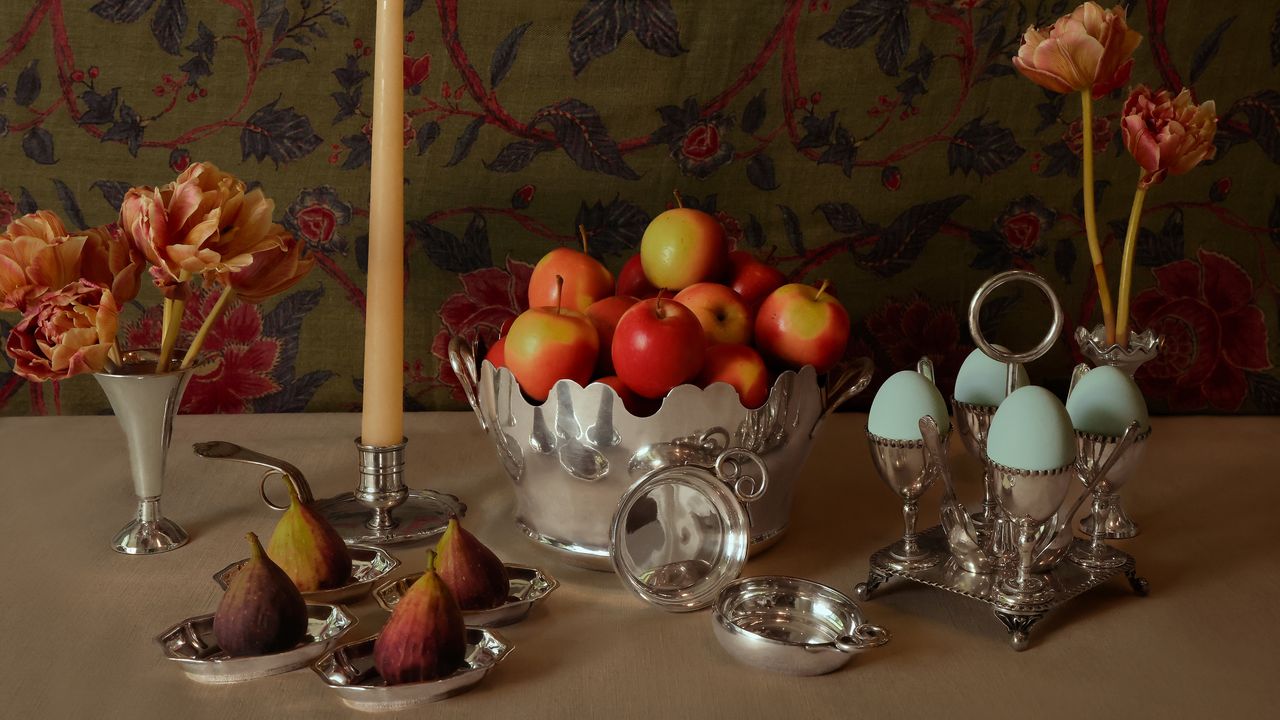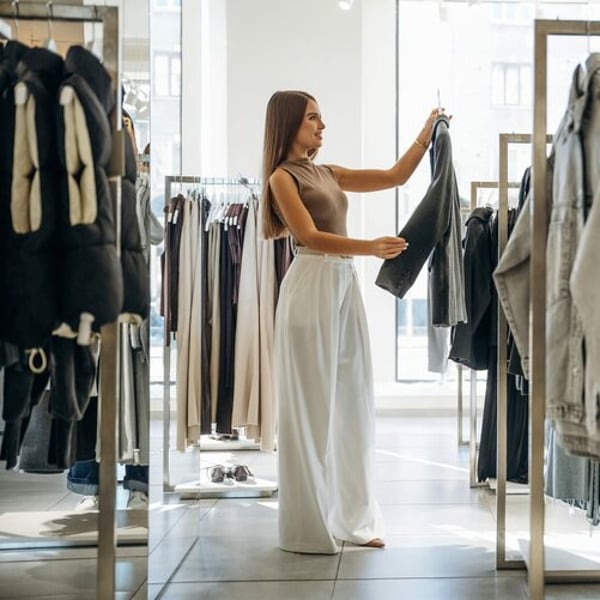Niche fragrance maker Boy Smells’ first brick-and-mortar location, officially opening on Thursday in New York’s SoHo, isn’t just a bid to reach new customers. It’s also in the hopes of reintroducing itself to some of its old ones, and reassuring them its ethos remains unchanged.
The store space features a “peep show” area where customers can interact with its fragrances, like “Cowboy Kush” and “Citrush”, both $78. It’s kitted out with a mix of industrial concrete and brushed aluminium as well as sheer curtains, designed in homage to the brand’s remixed identity, which it describes as more layered.
It’s been a rocky path. When the brand unveiled refreshed packaging and branding in April, its leadership hoped it would make a splash. Boy Smells had been struggling with declining sales, and the cohort of investors, led by brand agency General Idea, which had acquired it in 2023, felt a refresh would reinvigorate the brand and give it some buzz.
What they didn’t anticipate was some original fans being so distraught with the changes, which included new bottles, tweaked formulations and three new scents, that the brand would be accused of selling out and abandoning the queer community.
“It was very jarring for people,” said Zach Weal, the company’s president. Executives saw the negative feedback in real time through TikTok videos and Reddit threads. “When you have something that you love and you see it radically changing in terms of the way it looks visually … that’s hard.”
Boy Smells was originally launched in 2016 by Matthew Herman and David Kien, and quickly became a niche hit and resonated with the queer community for its “genderful” range of scents rejecting the traditional gender binary, a message it reinforced with simple black-and-pink packaging. Playful product launches like the aforementioned scents “Citrush” inspired by the party drugs known as poppers, as “Cowboy Kush”, created in partnership with the country singer Kacey Musgraves, further secured its positioning as both queer-coded and strictly adult.
The new look includes brighter duochrome packaging, scents with names like “Sugar Baby” and “Rosy Cheeks”, and some fresh, fruity body sprays. While Weal said it was intended to be more inclusive and open the net to more customers, some online detractors disagreed, referring to it as “Temu-fication” of the brand in reference to the Chinese fast fashion giant. The implication was that the brand implying had sold out for mass youth appeal.
The truth, according to Weal, is that the brand sold out, period. Weal said that after the rebrand, Sephora sold through a month’s worth of refreshed Boy Smells stock in mere days. More recent campaigns, such as introducing Citrush, formerly just a candle, as a perfume have been well received, he said, and said there’s been more positive online commentary. (One TikTok comment from this week said, “The new look feels way more fluid.”) Now with its first store, the brand hopes to continue its growth trajectory, and reach a new customer base.
“With our new look, we are absolutely outselling what we did before,” said Weal.
Navigating a Backlash
Weal said the rebrand wasn’t just an evolution, but a rebirth, and a necessary one. The company was arguably better known for its candles, was struggling to cut through in the faster-growing perfume space and was fast running out of road. “[Boy Smells] was not in a financially healthy place, and was likely going to go out of business,” he said.
Rather than all the changes happening overnight, as some observers felt had happened, Weal said the changes were a gradual process dating back to its 2023 acquisition led by General Idea. (Founders Herman and Kien are no longer involved in the company, having left in 2024 and 2023 respectively.) After the buyout, it set about studying customer feedback to analyse the business’ strengths and weaknesses, and also redirecting its focus to building its personal fragrance, rather than home fragrance offering, before eventually relaunching this year.

“The big goal was to become well-known as a fragrance brand, which meant we had to broaden our appeal,” he said, adding that fragrance sales were historically around 30 percent of sales, and now they comprise around 70. The brand also increased the percentage of pure fragrance in its scents to 25 percent, about five percent above most eau de parfum formulations, to make them longer-lasting, as well as tweaking its candle wax formulation to try and address customer feedback such as uneven burn.
Weal pushed back on the suggestion that more feminine-presenting scents like “Sugar Baby”, with notes of honeysuckle and sugar, were also an undermining of its queer roots. While he said the brand hadn’t realised how much its original packaging in pink and black had been perceived as a signifier of inclusion, the goal of the refresh was to make the fragrances easier to shop, and also more modern. It took inspiration from other high-end designer scents — the duochrome bottles call to mind offerings from Jil Sander and Dries Van Noten — and colour-coded them somewhat to make shopping more straightforward.
“Something green is maybe a fig, something pink is maybe floral,” said Weal.
Store-as-School
Aside from the packaging, Weal said its commitment to the LGBTQ+ community is unchanged — and the new space on Elizabeth Street, kitty-corner from other perfumeries like Diptyque, Avestan and Stéle, will help underscore that.
The brand cast Vivian Wilson, the estranged daughter of tech billionaire Elon Musk as the lead model in its Coco Crush campaign, which Weal referred to as “showcasing LGBTQ love across the board.” According to the brand, it’s the only fragrance campaign at Sephora to feature an openly transgender model. A recent collaboration with doll maker Bratz is an “ode to the young gay boy who wanted a doll growing up” as well as the young girls who may have been gifted them, he said, while the relaunch of the Citrush scent donated a portion of profits to The Trevor Foundation, an LGBTQ youth charity.
The physical space is meant to reinforce the idea of “genderful,” too. The design juxtaposition of industrial and cosy elements is intended to reflect the “layered identity” of the new brand, said Levi Shaw-Faber, co-founder of Faber/Hughes, the architect firm that led the project. The space will provide space for passers-by who are completely new to the brand to learn about it and its scent, and feature exclusive scents. It will also have the brand’s full range, allowing customers to shop across price points — travel-size mists start at $24, while full-size perfumes are $78.
Weal said Boy Smells hopes to open as many as four new stores in the US next year, in cities like Los Angeles or Miami, and believes having a dedicated brand space will be integral to getting the company back to sustained growth.
“When you have these experiential moments, people see what we look like in the real world, and how we show up in real life,” he said.
Sign up to The Business of Beauty newsletter, your complimentary, must-read source for the day’s most important beauty and wellness news and analysis.


